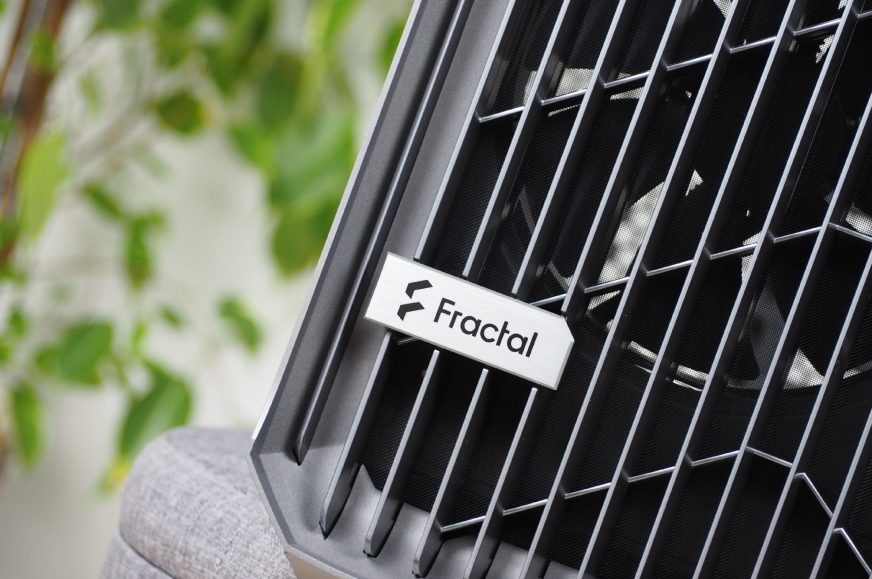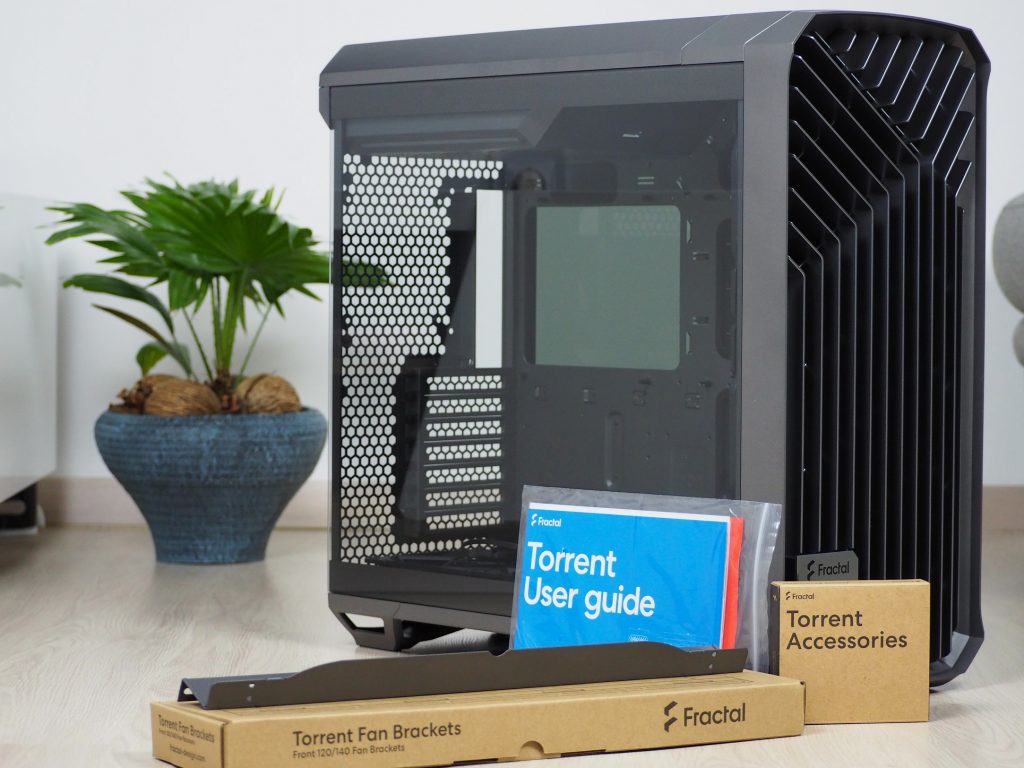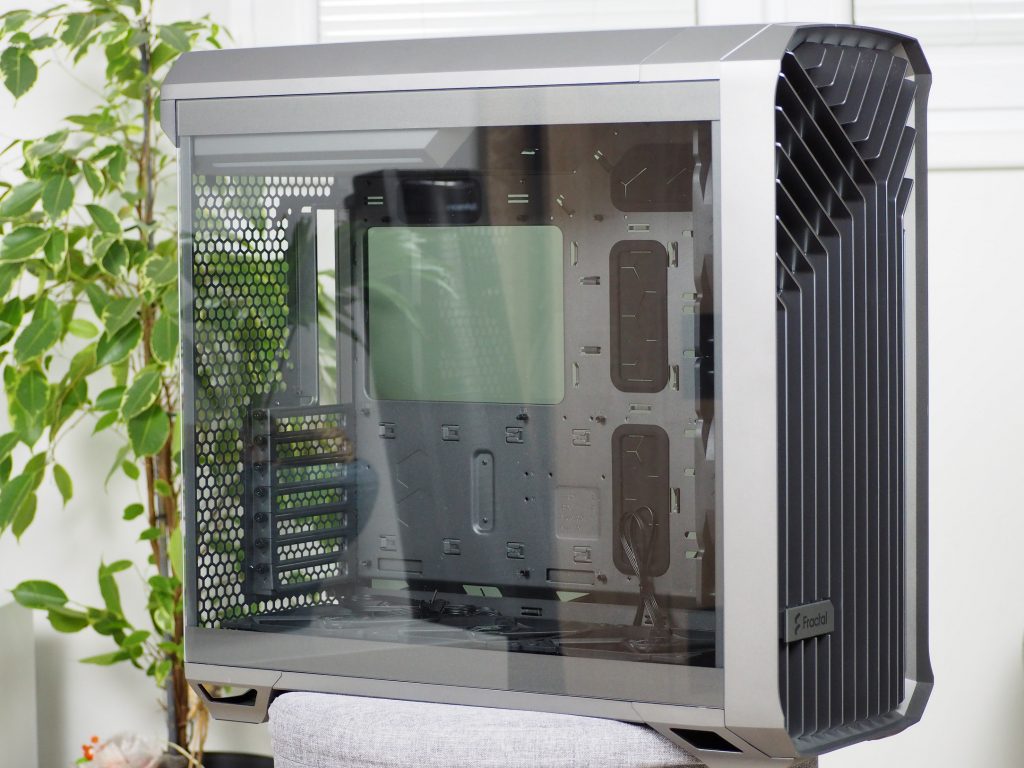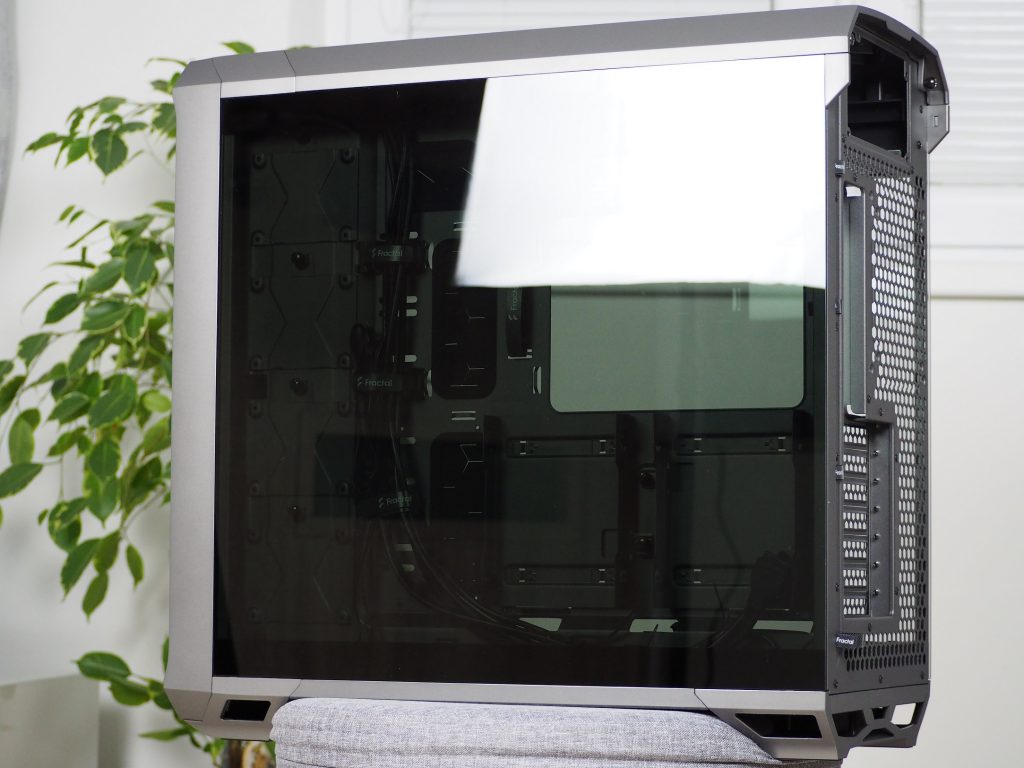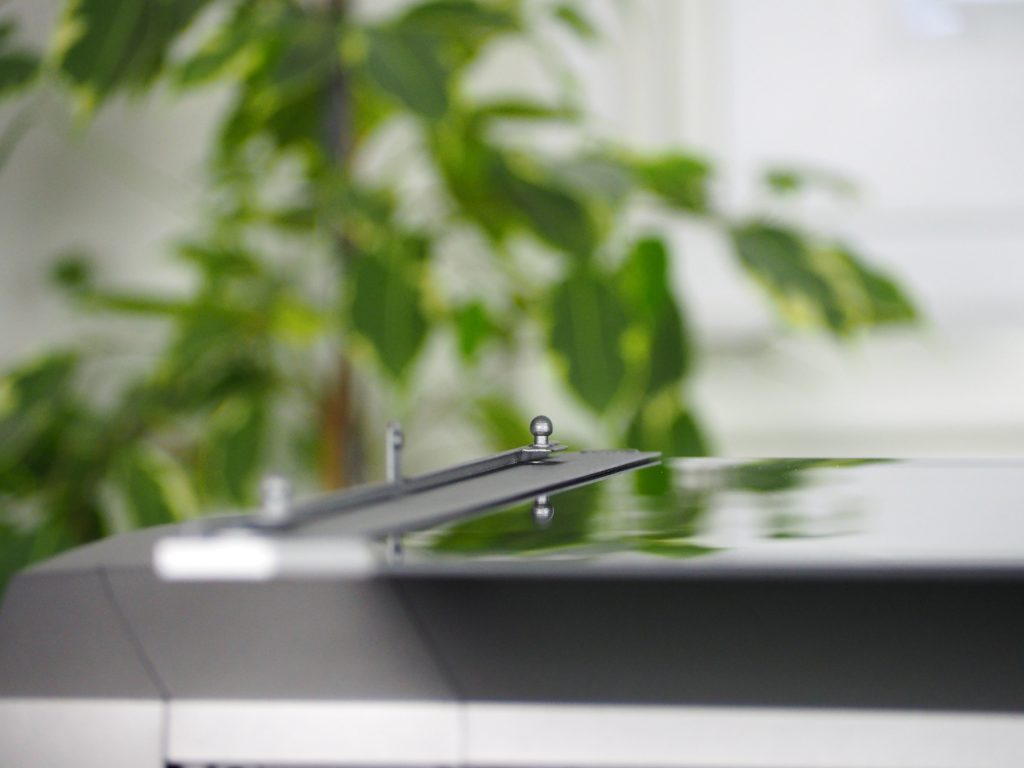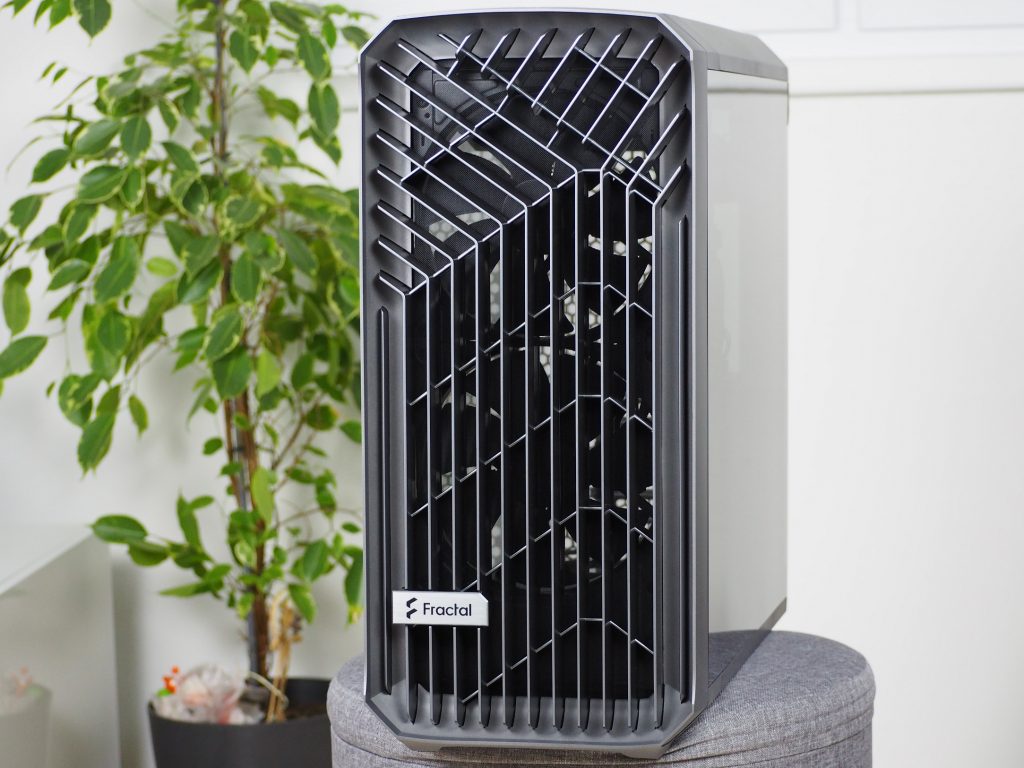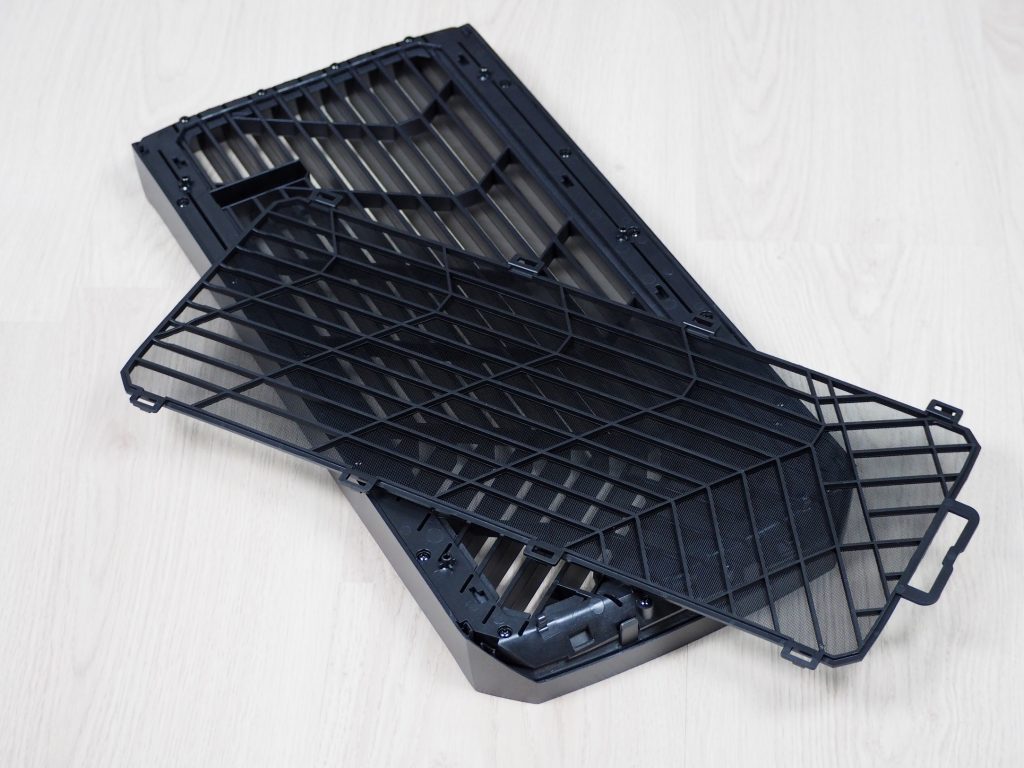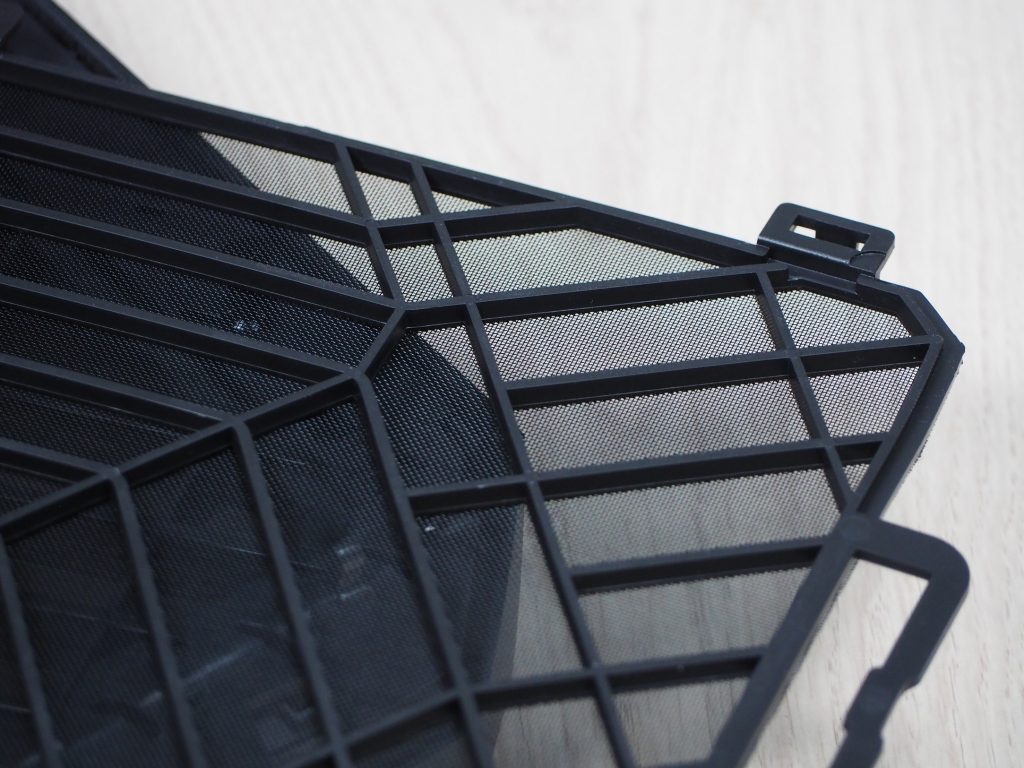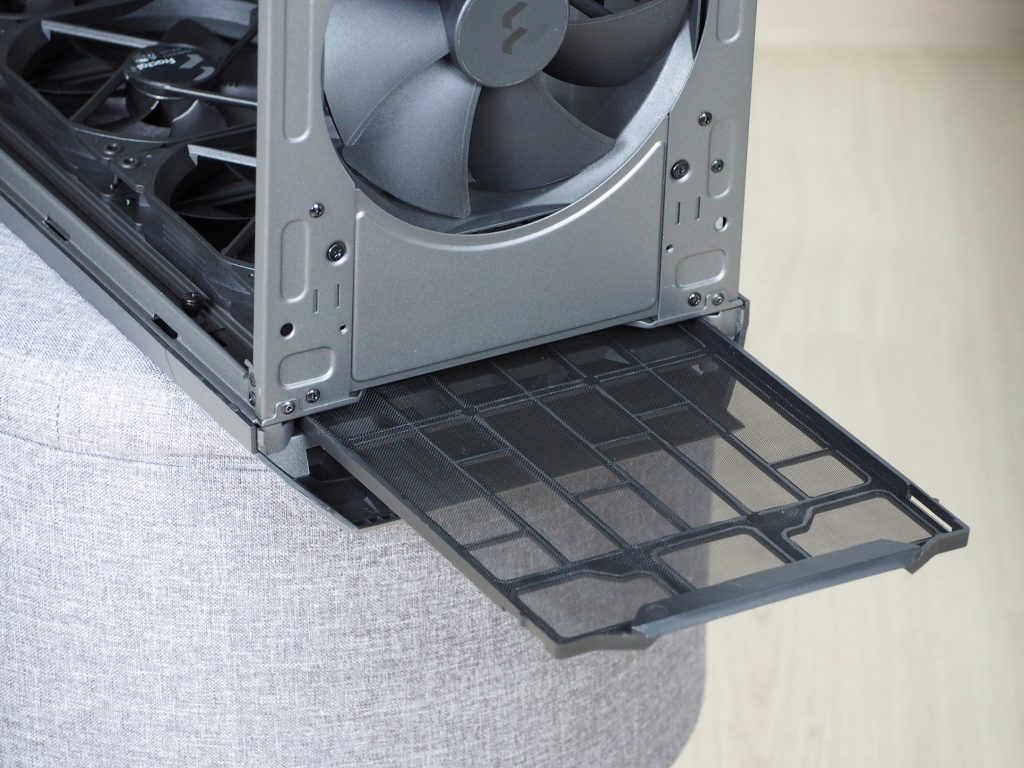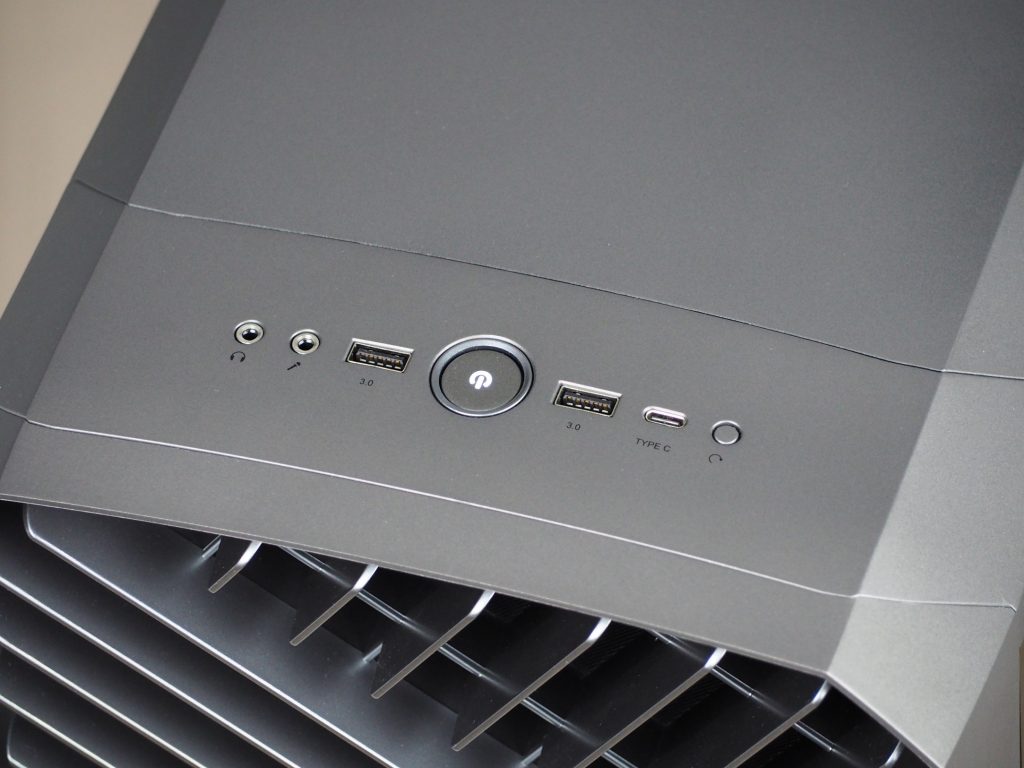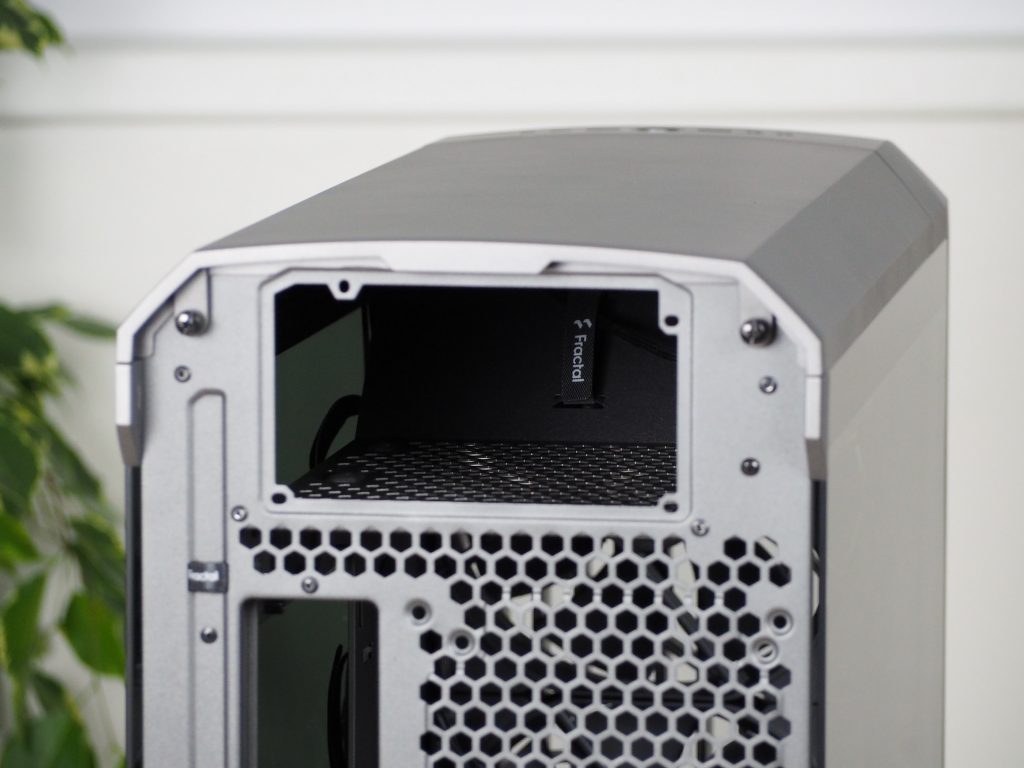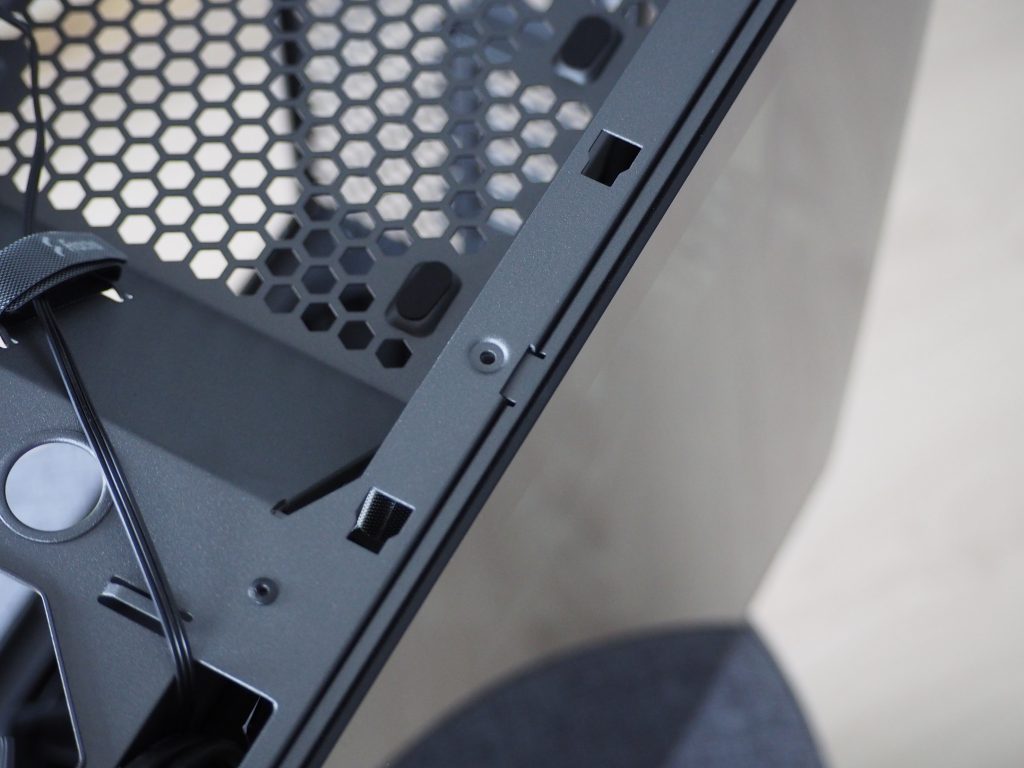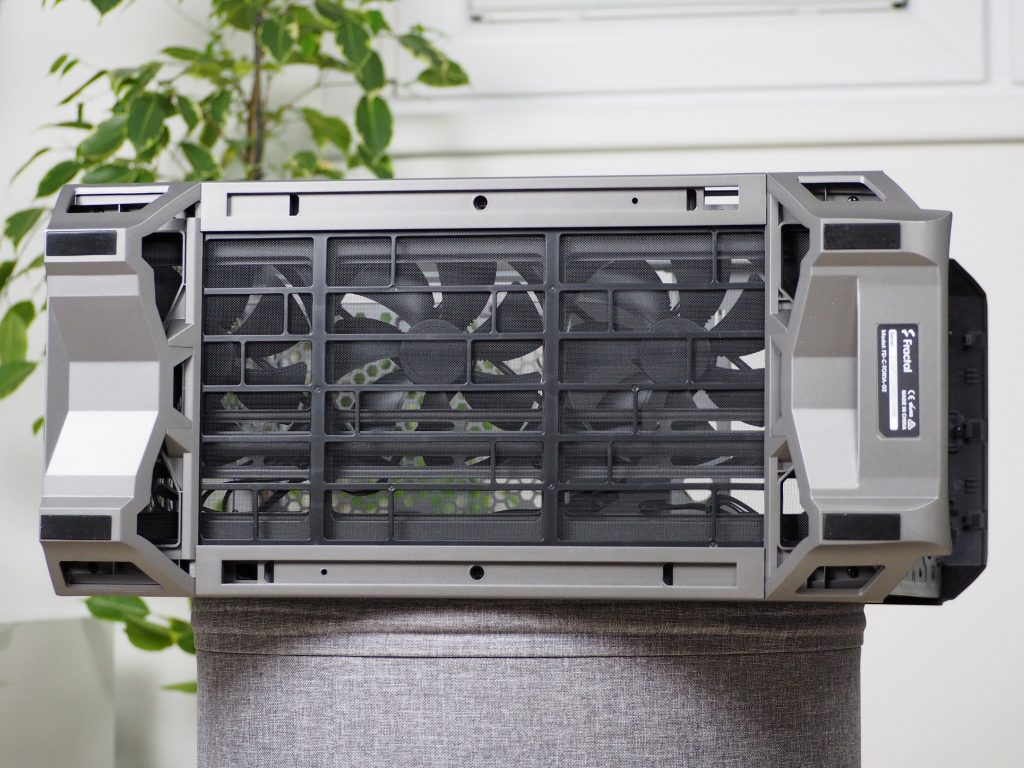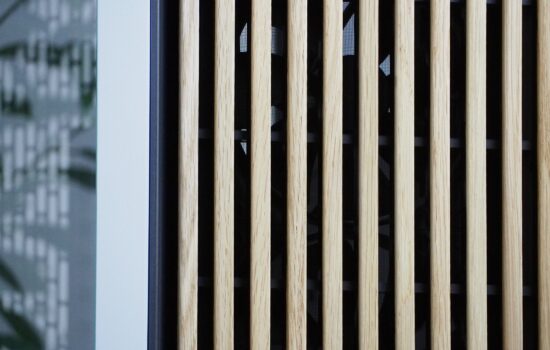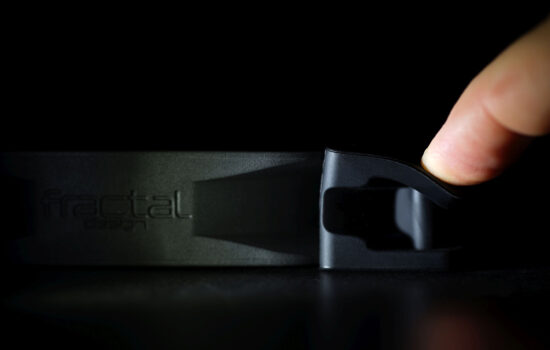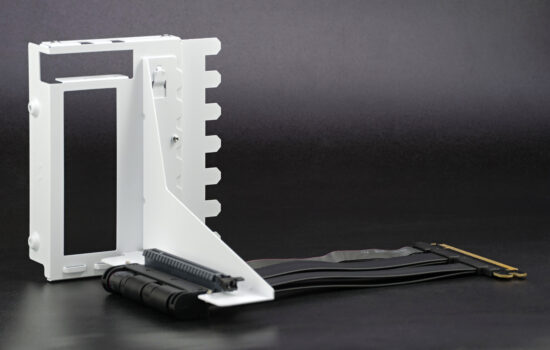Gappy exterior
Recently, Fractal Design introduced the Torrent case, which primarily focuses on the best cooling possible. In addition to a significantly open shell, the case has up to five fans, two of which are oversized and thick. The Torrent thus operates with an extremely high air flow, even in a relatively large space. Therefore, it will be interesting to see in the tests how these layouts affect the temperatures and noise performance.
Basic specifications
| Parameters | Fractal Design |
| Torrent | |
| Supported motherboard formats | Mini-ITX, mATX, ATX, E-ATX, SSI-EEB, SSI-CEB |
| Supported PSU format | ATX |
| CPU cooler | up to 188 mm |
| Graphics cards | up to 461/423 mm |
| Fan | 2× 180 mm + 3× 140 mm |
| Supported liquid radiators | 2× up to 420 mm + 1× up to 140mm |
| 2,5" positions | 4 |
| 3,5" positions | 2 |
| 5,25" positions | none |
| Dimensions [H/D/W] (and volume) | 530 × 544 × 242 mm (70 l) |
| Weight | 11,1 kg |
| Materials | steel + plastic + tempered glass |
| Connectivity | 2× USB 3.2 gen. 1 + 1× USB 3.2 gen. 2 Type C + 2× 3,5mm jack |
| Approximate price | 220 EUR |
Gappy exterior
As befits a high-end case from a renowned manufacturer, everything came tightly packed and filled with polystyrene. Although foam would have been better, it doesn’t make as much of a mess, but so be it. The larger oblong box includes an additional mount for standard sized fans on the front of the case, instead of the original ones. The smaller one, in turn, comes with mounting accessories like screws or even additional support for graphics cards.
In the Gray TG light tint version, you get both side panels made from 4 mm thick tempered glass. But if you have something against grey colour or glass in the case, Fractal Design has another 5 versions in black and white with different glass/metal combinations and fans with ARGB LEDs on the black variant. The big advantage of both side panels is the tool-less latching mechanism, which makes them quick and easy to slide out or in if you need to reach inside the case. You don’t even have to worry about breaking the glass during this manoeuvre as the whole panel is inserted in a groove. I’ve already praised this system on the cheaper Meshify 2 Compact.
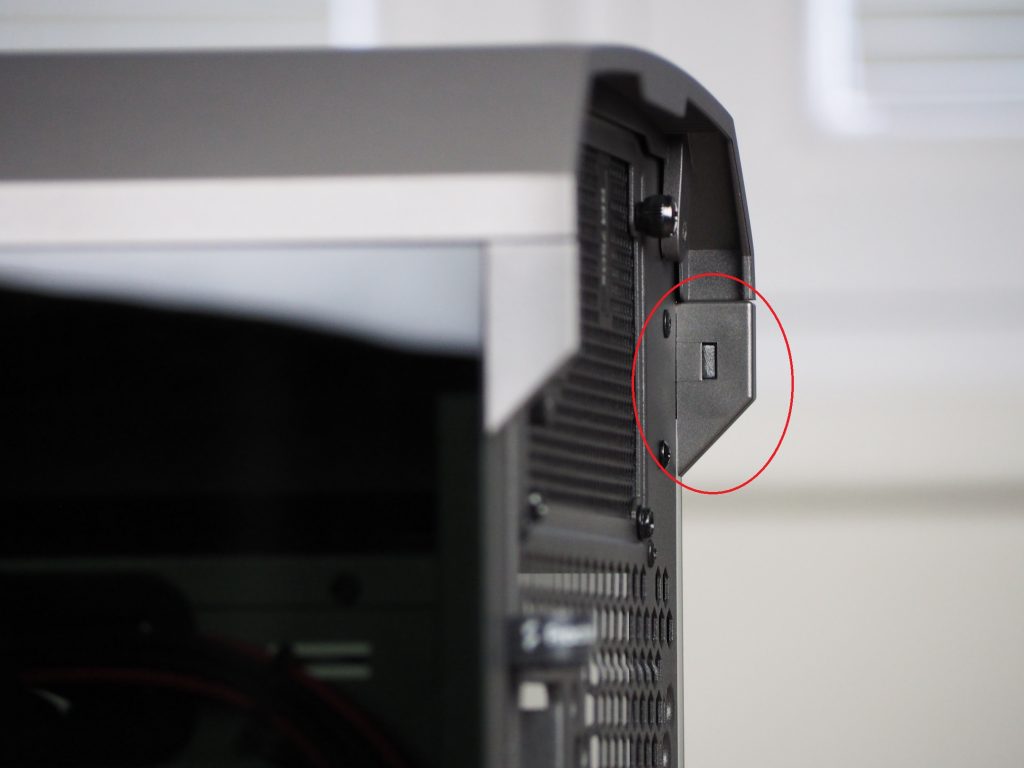
The first thing that will certainly catch your eye is the front panel. This is almost completely open with a grid design. It boasts the Fractal logo on the bottom. The panel can be easily removed when you pull the top away from the case where it is snapped in. Cleaning is very easy as there are no cables holding it to the case, so you don’t have to worry about cleaning it properly.
A fine-grain nylon dust filter is suspended behind the main panel to protect the fans from being hit by a larger object. It’s the only barrier in front of the intake. It can easily be slid out of the panel and cleaned with compressed air or water.
Behind it all are two massive 180mm thick Dynamic X2 GP-18 38mm fans, based on LLS (fluid-based?) bearings with a claimed life of 90,000 hours. Power and control is provided by a 4-pin connector, so the rpm range is from 300 to 1200. Hand in hand with the speed is the air flow which varies from 76 to 261m³/h, which will also have a significant effect on the noise level at high air flow rates. However, if you decide to replace the original 180mm fans, you will need to use the reductions in the package. These will add the ability to mount up to three 120 or 140 mm fans. You’ll also need a reduction for mounting a water cooling radiator to the front panel. These will fit in 360 (3×120 and 2×180) and 420 mm sizes. The bottom includes a hole with a nylon dust filter handle for suction from the bottom of the case.
The function panel on top does not lag behind in terms of compatibility. You’ll find two USB 3.2 gen.1 (i.e. with 5 Gbps) Type-A ports, the more and more frequently used USB-C connector with 10 Gbps, and two 3.5mm jacks for a microphone and headphones. A power and reset button tops it all off. When switching it on, you can feel from the press alone that this is an exclusive case. The power-on status is indicated by a subtly illuminated character on the power button. The restart is significantly less easy to press, as a very small area has to be pressed more deeply. This can also be taken as a prevention against unwanted pressing.
“Beehive” perforations form a large part of the back. Although the rear fan position is not fitted, it is possible to notice a pre-fit for a 120 or a 140mm fan. Along the perforation stretches a slot for the motherboard I/O panel, and directly underneath are 7 PCI Express slot covers. Velcro ties are provided for all cables that are fed from the back of the case. These ensure a sleek look from the back of the case as well. Since the power supply is unconventionally placed in the top of the case, this organization of cables is also welcome from the back.
Although it may seem unusual to install the power supply from the top, I must say that I have never managed to install it so easily in any case. Through two screws you remove the top plastic cover, and you can simply insert an ATX format power supply with a maximum length of up to 230 mm. Handling the cables is all the easier because you can access them from the top. I appreciate how FD thought about these cables and placed a Velcro tie in this compartment as well. You may appreciate this as much as I did when building.
Since it’s quite easy to slide both side panels out, Fractal Design has secured them with a locking option via a screw on the top under the top plastic cover. It’s a great prevention against breaking the glass if, for example, you’re moving your computer somewhere. To the left of that you can notice the round opening for filling the expansion tank of the water cooling. There are three of these, two 21 mm and one 25.4 mm.
And finally the bottom of the case exterior, where there are 4 feet with non-slip pads. These hold the entire bottom part at a height of 35 mm above the pad. This allows a large amount of air to be sucked in from underneath to cool the hardware. Therefore, the entire underside is also protected by a fine-grain dust filter. If you miss some decent backlighting from underneath the case, there are spaces on the sides of the case into which LED strips can be placed.
- Contents
- Gappy exterior
- Spacious interior
- Test methodology
- CPU and GPU cooling tests
- Motherboard cooling tests
- SSD cooling test and heating underneath the ceiling
- Conclusion





